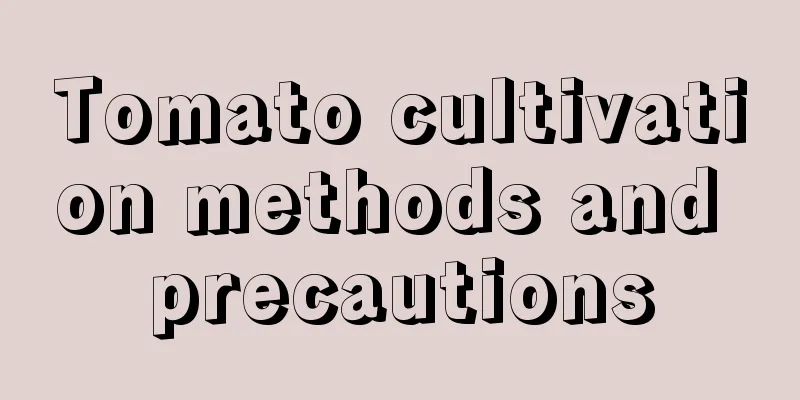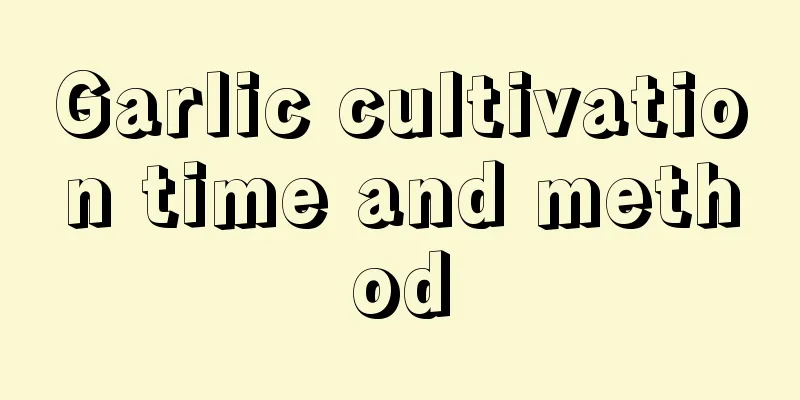How often should tomatoes be watered?

|
Tomatoes are a kind of vegetable that likes water very much and has strong drought resistance. Usually, it only needs to be watered in an appropriate amount. Never water them too much, otherwise it will cause water accumulation and root rot. When watering tomatoes, be sure not to lack water, and make sure to water them thoroughly so that the fruits can grow better. How often should you water tomatoes?Tomatoes need different watering frequencies at different times. Generally, they can be watered once every 7-10 days during the early stage of planting, and once every 5-7 days during normal maintenance. Frequent watering is required during the flowering and fruiting period, usually once every 10 days. Newly planted tomatoes usually need to be watered once every two to three days, and the amount of water should not be too much each time. After 15 days, they need to be watered once every two days. According to experience, watering tomatoes frequently before and after planting can help quickly grow seedlings and reduce temperatures. The main thing to note is not to water too much, just water thoroughly. There is no quantitative rule for how much water to water tomatoes at a time. What kind of water is good for tomatoes?When tomatoes reach the flowering and fruiting period, in order to obtain higher yields, fertilizer is added with the water every time they are watered. Logically, the fruits will grow ideally. As a result, the fruits appear hollow or deformed. In fact, ordinary tap water can be used for tomatoes. If fertilizer water is used, the elements will antagonize each other, which will lead to poor root absorption. Tips for watering tomatoesThe watering methods for tomatoes are different in different growth stages. Generally, tomatoes need to be watered again for 3 to 5 days after being planted. In the early stage of fruiting, they are generally watered once every 7 to 10 days to keep the soil moist. If tomatoes are watered excessively, drainage must be carried out in time, the soil must be loosened and ventilated more to promote faster evaporation of water and reduce damage to it. |
<<: Cultivation methods and precautions of climbing roses
>>: French jasmine cultivation methods and precautions
Recommend
The efficacy and function of Pyrola
1. Cough relief Pyrifera is slightly cold and can...
How to grow gladiolus
1. Soil When breeding, suitable soil should be us...
How to propagate water bamboo
Cuttings The best time for cutting propagation is...
Planting and cultivation techniques of poplar
Poplar is the main timber species in my country a...
What month is tomato planting season?
Tomato is a nightshade vegetable that many people...
How to grow snapdragon in spring
1. Water Snapdragon likes moisture but cannot tol...
When is the best time to transplant the elm tree?
In the autumn and winter of each year, a large nu...
Why are the peony leaves turning yellow?
1. Too much light Peony is a relatively light-lov...
The cultivation methods and precautions of Red Prince Weigela
1. Maintenance methods 1. Temperature: Red Prince...
What to do if mountain rose becomes lignified
1. Don’t Misunderstand Lignification Many people ...
How to grow peony trees and precautions
Growth habits of peony trees Peony trees prefer a...
How to repot the Emerald Tree
1. Preliminary preparation The first thing we nee...
How often should wisteria be watered?
How often should wisteria be watered? Generally, ...
How to prune a potted orange tree
When to prune orange trees Potted orange trees ca...
Can maple trees be planted outside your home?
Can maple trees be planted outside your home? The...









